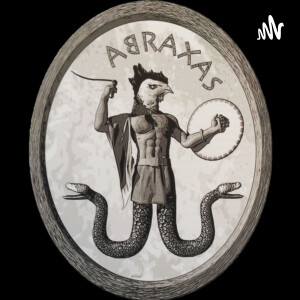
MIND-BLOWING Anunnaki & Nephilim | 4K DOCUMENTARY
 2023-08-24
2023-08-24
https://www.patreon.com/GnosticInformant Please Consider joining my Patreon to help finding scholars to bring on. Any amount helps me. Thank you existing Patrons. Dr. Joshua Bowen (Ph.d) & Megan Lewis (M.A) Assyriology www.youtube.com/digitalhammurabi Learn to Read Sumerian: https://www.amazon.com/Learn-Read-Ancient-Sumerian-Introduction/dp/1734358602 Despite their ancient origins, the Anunnaki have been subject to many contemporary reinterpretations, notably in various fringe theories and works of pseudo-history. These often involve extraterrestrial influences and other speculative concepts, but these ideas are not supported by mainstream scholarship or historical evidence. But more on that later as well. The mythology of the Anunnaki is complex and spans several ancient cultures, with the earliest accounts coming from the Sumerians. Their stories, like many ancient mythologies, attempt to explain the origin of the world, the nature of gods and humanity, and the laws that govern existence. In Sumerian mythology, the Anunnaki were initially viewed as celestial deities associated with various aspects of life and nature. However, the term Anunnaki gradually came to be associated more specifically with chthonic (underworld) deities. In Mesopotamian mythology, the term "Anunnaki" was used to refer to deities in general, but it was often specifically associated with the deities of the underworld, the realm of the dead. However, this does not necessarily imply a negative or punitive association. In many ancient cultures, the world was perceived as a multitiered structure, often divided into heavens, earth, and underworld. Gods and goddesses were assigned to different realms based on their roles and functions. The Anunnaki are depicted in various myths as judges in the underworld, ruling over the fate of the dead. For instance, the goddess Ereshkigal, the queen of the underworld, and Nergal, the god of death and plague, were both considered part of the Anunnaki. The reason why many of the Anunnaki were associated with the underworld is likely related to the Sumerians' beliefs about life, death, and the afterlife. The underworld, known as Kur or Irkalla, was considered a dreary, dark place where the spirits of the dead existed in a shadowy version of their earthly life, sustained by libations and offerings from the living. The Nephilim, as depicted in biblical traditions, are the offspring of the sons of gods (or fallen angels) and are described as giants. In general, the Anunnaki and the fallen angels, who give birth to giants, or Nephilim, are separate entities from distinct cultural and religious contexts: Mesopotamian mythology and Hebrew religion, respectively. Both undergo the wrath of God and try to teach humans knowledge. Both the Anunnaki and the fallen angels are seen as powerful beings with the ability to influence humanity. The Book of Enoch, an ancient Jewish religious work, ascribes the origins of sin and corruption on earth to a group of angels known as the "Watchers," who fell from grace by mating with human women and teaching humanity forbidden knowledge. But rather than the Anunnaki, This story shares more elements with the myth of the apkallu, seven wise men or demigods in Mesopotamian mythology who were created by the god Enki (a member of the Anunnaki) to establish culture and give civilization to mankind. #gnosticinformant #nephilim #anunnaki
More Episodes
 2023-08-24
2023-08-24
 2023-08-24
2023-08-24
 2023-08-24
2023-08-24
 2023-04-26
2023-04-26
Create your
podcast in
minutes
- Full-featured podcast site
- Unlimited storage and bandwidth
- Comprehensive podcast stats
- Distribute to Apple Podcasts, Spotify, and more
- Make money with your podcast
It is Free
- Privacy Policy
- Cookie Policy
- Terms of Use
- Consent Preferences
- Copyright © 2015-2024 Podbean.com




